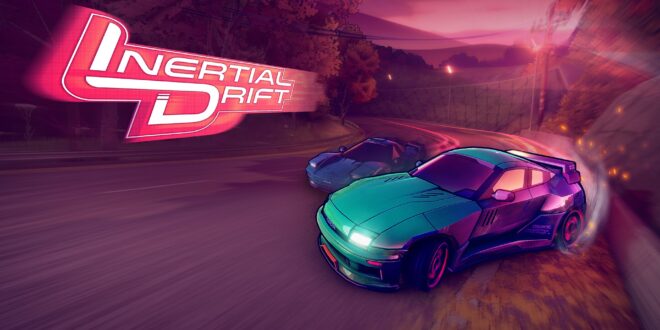Michael O’Kane of Level 91 Entertainment and and David Baxter of Boom Clap Play explain how they implemented Atmos into twin-stick racer Inertial Drift. This article was created in collaboration with Dolby

Inertial Drift is a dual stick arcade style racer inspired by classic drifting games. The audio goal was to reinforce and enhance the stylised visual aesthetics and gameplay.
We leveraged Wwise for audio authoring and became aware of the potential of Dolby Atmos and the available Microsoft Spatial Sound Platform Plugin in the early stages of development.
We tested the configuration across full 7.1.4 studio monitors, a top firing consumer system, stereo monitors and the headphone renderer. Without changing the mix implementation across any testing scenarios, we found pleasing results with negligible issues.
AMBIENCE DESIGN

Using Wwise’s automation panel we created vertically layered ambiences for the game. By setting the positional behaviour to follow the orientation, regardless of positional distance, we could define a zone and fire it off on a single game-object, containing a fully spatialised ambience that reacts to the player’s camera orientation. We then blend between various ambiences as the car moves around the track.
For tunnels, we implemented a simple acoustics solution using the built in Wwise surround reverb that feeds into all front and side channels. Sounds are sent to the reverb effect as an auxiliary bus, allowing us to curate what sounds are impacted by reverb and by how much. We primarily used reverb to enhance the engine sounds when in tunnels, making them sound louder and more powerful.
WIND SYSTEM
After experimenting with a few different vehicle wind systems, we moved towards a proximity based spatial approach. The distance from the car to the walls is calculated and used to control procedural wind layers in the side channels. The distance to overhead obstacles can also be tracked to provide a layer of wind through the overhead channels enabled by Atmos. This gives the player a lot of feedback about the environment around them, rooting them further into the space.
VEHICLE DESIGN
Stylised engine sounds were an important part of our audio design. We used a mixture of multi-sampled static RPM loops from library sources, personal vehicles, synthesis and even guitars. After creating a library of mechanical and electronic types, we assigned various characteristics in a procedural manner to each vehicle to create a variety of sounds.
To provide detailed road feedback to the player, surface sounds are synthesised per wheel. Each tyre reacts to whatever surface it is in contact
with, playing rolling and sliding sound effects based on the speed and slippage.
HITTING THE APEX
We definitely feel working with Atmos enhanced the audio experience of Inertial Drift, and we were pleasantly surprised at how easy it was to implement. In some respects it is as easy as just switching a plugin on, however we would definitely recommend seeking access to an Atmos equipped mixing room for at least some of your tuning sessions to give you a full perspective on what’s going on. The headphone renderer is great for day-to-day work and definitely enhances the experience, however it doesn’t compare to the imaging you get from a full monitoring solution.

 MCV/DEVELOP News, events, research and jobs from the games industry
MCV/DEVELOP News, events, research and jobs from the games industry




